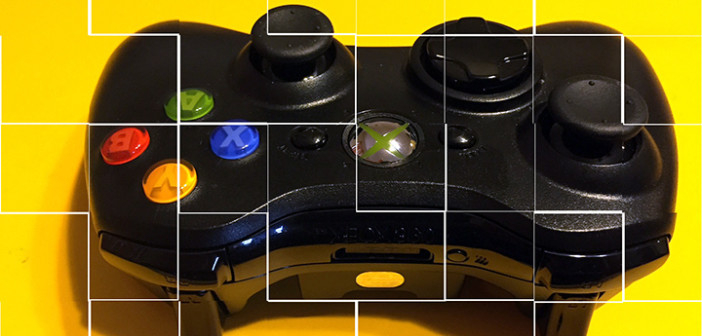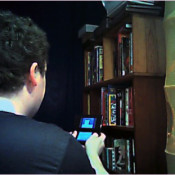A camera flies over a massive expanse of urban terrain twisting and turning down side streets and alleys. High-intensity music plays over the footage while the camera comes to a stop in front of a set of glass double doors. They swing open and hundreds of blocky children shuffle around with the same walking pattern.
You’re suddenly prompted to fill out your name and save. A new slot is made on your memory card, and you’re ready to begin.
But first a tutorial.
The reality is that video games have not always had the best reputation in recent years. The games have been accused of causing violence and corrupting the youth. An article on Procon.org lays out the basics of the arguments coming from both sides.
With all of the controversy, ratings issues, and a bad reputation, it’s no wonder that video games and formal education had no real connection at all. At least at the schools they didn’t. Rather they had one in the home.
Senior Jessica Thompson (’16) remembers, “Some of the first games I ever played were educational computer games and I have such fond memories of them. Jump Start 1st Grade is still one of my favorite games for the computer.”
In general, schools have not had a history of supporting the idea of video games as an educational medium. They are merely things that belong in the home environment.
Scientific Accuracy in Video Games
Back on the screen, your avatar is greeted by an overly animated version of the principal angrily chasing some of those blocky children into classrooms at the sound of a bell.
A new objective flashes below your likeness, “Get the children into the classrooms.”
While the video game industry has grown far away from any school, the scientific influences are clearly present. For example, Rebecca Angel of The Wired points out the existence of a National STEM video game challenge. Students are tasked with developing a game that emphasizes one aspect of STEM, which is clearly an overt reference to the prevalence of scientific accuracy in video games.
Those games are certainly not the ones appearing on shelves. However, even the big game production studios are working to ensure that their games demonstrate elements of science, biology and even physics.
Media Studies Professor Gautam Wadhwa explains, “Once the concept is developed and the story for the game is finalized, game companies hire consultants who are specialists in their scientific fields. These specialists (could be professors, researchers, or scientists) ensure that the accuracy is maintained throughout the game.”
Gamers are clearly expecting these games to follow the natural laws of science, but they do not want it to be an obvious connection. North Central junior and secondary education minor Angus Buchanan points out, “I prefer having scientific accuracy to the point the game makes logical sense.”
Grab your red shell, gravity gun, buster sword, and maybe an ocarina because it’s side-quest time!
You meet the gaze of a hall monitor clad in neon orange and yellow who halts you on your journey. He says he is collecting hall passes but he needs help gathering them all. The orange soldier says he will reward you dearly if you gather all of the hall passes and sends you on your way.
Young people are viewing more online content than ever before, with YouTube being a primary go-to place.
One channel on YouTube is called “The Game Theorists.” It is run primarily by 29-year-old Matthew Patrick (MatPat). In his videos he covers everything from diagnosing Mario as a psychopath to analyzing the gemology of a Zelda rupee. He has even covered the physics of many classic fighting moves. His channel thrives on presenting a theory and then using scientific evidence to back it up in a unique and fun way.
To date, his channel has 5,911,266 subscribers. Though MatPat is very engaging to listen to, the reality is that his channel is so successful because he incorporates science, math, physics and even psychology to illustrate his points. Clearly there is a great number of people who are interested in this content giving rise to the potential assumption that video games and the sciences may not be so unrelated. The natural next step might be to utilize them as educational tools.
The final climax is drawing near. All of the children are in their classes, the lunch room is clean and the hall monitor has all of his hall passes. Now you are ready for the boss battle!
Your character enters a small conference room at the back of the school. Behind the table sits a group of seven, fierce-looking school administrators. They are the last ones separating you from your final goal.
A HuffPost Education article from 2014 describes some explicit ways in which video games can be beneficial to education. The key way is through the idea of the individualized experience video games create which can then lead to individualized approaches to learning.
Buchanan mentions, “The concept of gamification is of huge interest to me as a prospective teacher. Research into this area shows that by making learning more interactive and responsive through the use of games leads to higher understanding and retention rates among students.”
Another article posted on Education World on Feb. 28 indicates the future of video games is quickly turning toward incorporating video games in the classroom. Even older educators like preschool teacher Gail DePhillips says in video games, “a few of the things that I feel are most educational are the problem-solving skills and how the games require you to think ahead, not to mention eye-hand coordination and the ability to think fast.”
The last administrator flickers and disappears before you. Triumphant music plays as you hold up your controller in victory. Credits roll across another expanse of the urban city while the camera leaves through those double glass doors.
We now enter the “golden age of video games.” One where we play to have fun, and we play to learn.


